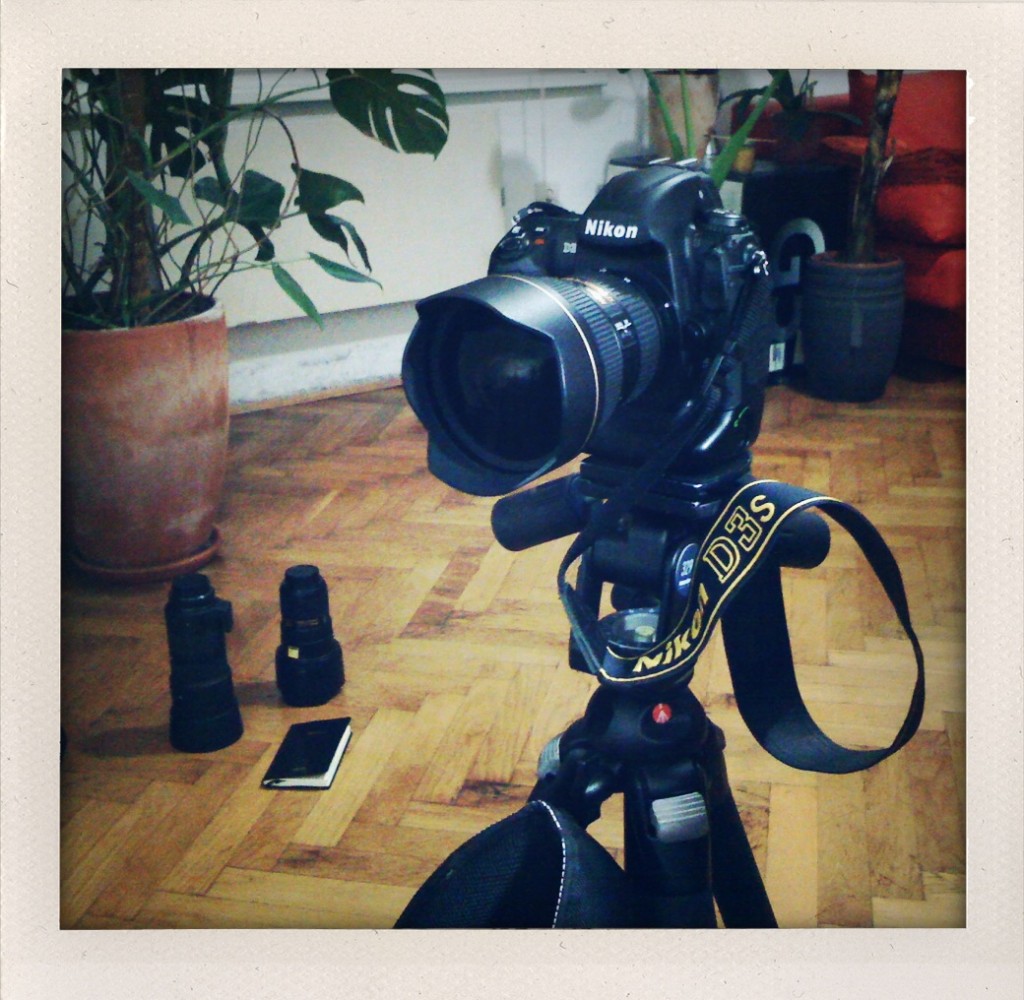Last thursday (Jan 7th) I got a loaner Nikon D3s with 14-24mm f/2.8 and 24-70mm f/2.8 lenses from Nikon Slovenia. I wanted to check if it fits into our workflow at work (Baza Media 2.1) using Sony EX1 cameras for recording Red Bull events, so I took it with me to Beograd at Red Bull Street Style. But before the real test I wanted to repeat the story from a year ago when I got a loaner Canon EOS 5D mark II.
As I came home in the evening I took the camera and a tripod and went out on the streets to do some filming in the available street light. I decided that I will do exactly the same movie as I did a year ago. She same shots, edit, music… And so I went out armed with six images representing the frames. At the end I was caught by the snow, so I had to end quickly even though the camera is weather proof.
Nikon D3s is a full frame camera in a large body with incorporated vertical grip, which bothered me a bit as I am not used to the size of it. Menus are the same as with other Nikon bodies. Manual exposure is, even though there are lots of wrong info on the internets, easily set. You just set the camera to M – manual (M, A, S, P), press the Lv (Live View) button, press the Ok button to show the actual image and you are there. You set the aperture with front wheel, shutter with back wheel, and ISO combining ISO button and back wheel. Easy as riding a bicycle. I comparison to 5D when I got it a year ago. A big battery holds its charge forever (especially if you have two) and the video file sizes were reasonable. 500MB for 3 minute clip which means that I could record around 48 minutes on 8GB CF card (and you can put two inside) in 5 minutes segments as that is the maximum length of the clip which wasn’t problematic for me.
First problems appeared at editing. The camera records video in avi format in Motion JPEG codec. I imported the footage in Final Cut Pro and wanted to set the timeline automatically (as is the option since 6.0 on) but avi didn’t trigger the automatic setup. Then I wanted to use the method I used editing Canon footage. Rough edit, send footage to Color for color correction and then after recompress to ProRes a fine edit. But that didn’t work either. Color does not support avi files!
What now? Obviously I needed to convert the footage before Final Cut Pro import. And so I used freeapplication MPEG Streamclip to convert everything in mov files which my Mac (MacBook Pro 2.93 GHz) did in real time. When everything was in ProRes (LT) the editing was quick because I already had a previous edit. I tracked the title to height limit markers in Shake.
Color correction in Color was simpler, because ProRes is more suitable to manipulate than Canon’s h.264. The footage had more grain but I partly blame resolution for that. Canon records in 1080p and as I downressed the clip to 720p for online viewing the grain was a little less noticable. Nikon only records in 720p.
There are still benefits shooting DSLR. Lower depth of field, the quality of the lenses, high light sensitivity, small size of the gadget, but I think that these are still just photo cameras with video mode and there need to be a lot of progression to make recording more useable.
Streets at Night II – Nikon D3s from Peter Prevec on Vimeo.
Streets at Night – Canon EOS 5D Mark II from Peter Prevec on Vimeo.
P.s.: If you want to know more about the camera or movie please comment below.
P.p.s.: If you notice something strange in the movie let me know.
P.p.p.s.: I will write about combining the cameras with the Red Bull event in a later episode.
Slovenski prevod vpisa najdete tukaj.

thanks for the test!!!
so which do you like better the 1D4 or the D3s…. The D3s seems to have more shadow detail or was that the way it was shot. I hear the 1D4 isn’t super sharp 1080p but more like 720 in a 1080p wrapper… is the D3s anywhere close to the 1D4 resolution?
I seem to agree with gamer. The D3s shadow detail is cleaner to my eyes but obviously we are dealing with heavily resampled video clips. Im testing a MK4 now and will post samples on vimeo soon. Its an amazing camera but I feel the Nikon has a large edge in low light performance.
One thing is for sure, the 1.3 crop is garbage on the Canon. Having a nice Ziess MF 50mm F1.4 lens behave like a 65mm lens is aweful.
:(
Thanks for sharing your videos!
@gamer I had them way to little time to tell you about the resolution between D3s and 1D mk4.
I like D3s movie better because it has better picture. The noise is more grain like not video noise. Canon has the whole rainbow in its noise. I like the full frame aspect which in connection to lower pixel count is better for low light than Canons high pixel count and 1.3 crop factor.
But then again Canon has 1080 24p, 25p, 30p and 720 50p, 60p and better codec, even though it is not working codec but a delivery one.
I wouldn’t buy any of them if I would seriously need them for video work.
But they are both great photographic cameras.